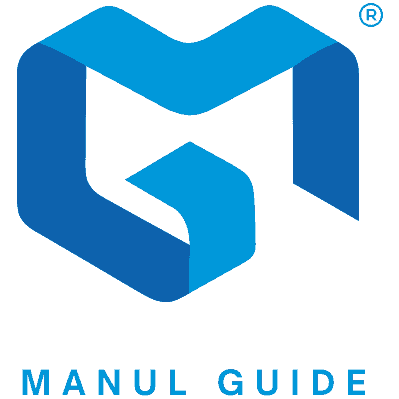SEO Services For Manufacturers: Elevate Your Online Visibility
Key Takeaways
- Tailor your SEO strategies to the unique needs of the manufacturing sector to effectively reach your specific audience.
- Ensure your manufacturing website is technically optimized to improve search engine rankings and gain market share.
- Invest in SEO to enhance brand visibility, generate quality leads, and ultimately boost sales volumes.
- Create your starting point with detailed audits and be sure to have smart, defined goals that provide strategic direction for your manufacturing company.
- Select an SEO partner who understands manufacturing nuances and can provide targeted expertise.
- Focus on key performance indicators and use data-driven insights to continuously improve your SEO strategy.
Understanding SEO for Manufacturers
What is Manufacturing SEO?
Manufacturing SEO is a specialized form of search engine optimization. Most importantly, it’s laser focused on serving the specific needs of the manufacturing industry. It’s made up of very technical things such as targeting keywords and optimizing content.
Manufacturers need to get the right keywords in place that are appropriate to their industry. This strategy assists you in answering customer questions at all phases of the sales funnel. One important part of it is ensuring the content is targeted to the audience’s individual needs.
This includes an emphasis on technical specifications and case studies, which makes it distinct from standard SEO practices. Technical SEO has an important part on manufacturing websites. This means everything from properly optimizing images to structuring the site in a logical manner to implementing redirects correctly to improving user experience and site speed.
A strong backlink profile, including links back to your site from other authoritative sites, is equally important in helping you rank well on Google.
Why Prioritize SEO for Manufacturers?
Done right, SEO provides a powerful competitive advantage in the highly-competitive landscape that is manufacturing. Unlike traditional advertising, where the benefits disappear once you stop paying, SEO has compounding returns.
Investing in smart SEO lays the groundwork for persistent, omnichannel online presence—the key ingredient for capturing more market share. That’s why a strong SEO strategy is so important—79% of manufacturers already taking advantage of it.
On top of that, organic traffic accounts for 69% of all leads for these companies. When manufacturers adopt this comprehensive approach, it can help elevate a company’s standing above competitors, driving long-term growth and sustainability.
Impact of SEO on Manufacturing Growth
This singularly important detail of improving search engine rankings can lead directly to increased sales volumes. When manufacturers are able to show up on Google’s first page, it increases exposure and brings in a larger pool of potential clients.
This added awareness will help enhance brand reputation and create customer trust for years to come. Manufacturing case studies show that with an effective SEO strategy you can achieve real growth and measure it, making a case for why strategy matters.
By partnering with experts like Sixth City Marketing, manufacturers can leverage SEO to reach new heights in their business endeavors.
Benefits of SEO for Manufacturers
Increasing Brand Visibility
SEO is key to maximizing brand exposure for manufacturers. Through higher search rankings, SEO puts a brand front and center in search results where new customers are looking to make a purchase. As a result, unified branding throughout these digital channels strengthens a manufacturer’s identity, helping ensure that the audience identifies and relates to the brand.
Even a small manufacturer of heavy industrial equipment can improve their website. This is what gets them to rank first when someone searches for “high-efficiency compressors.” This approach makes them more visible, attracting more traffic to their site. Companies like Caterpillar and John Deere have successfully used SEO to boost their online presence, making them household names in their industries.
Enhancing Lead Generation
SEO truly shines in bringing new customers to the door by optimizing for relevant keywords you want to rank for. This strategy attracts people who are already looking for the products and services that manufacturers provide. Content marketing aligns perfectly with this model by attracting and nurturing qualified leads with helpful, relevant content.
SEO is a practice of optimizing landing pages and it’s key because that’s how you turn visitors into leads. Take for example, a manufacturer that focuses on sustainable packaging solutions. They should be targeting keywords such as “sustainable packaging solutions.” By producing content that aligns with this goal, they’ll draw in companies that value sustainability, increasing lead quality and quantity in the process.
Boosting Sales and Revenue
That high-quality traffic from SEO ultimately translates directly to increased sales opportunities. SEO affects every stage of the sales funnel by continually bringing in new customers. Identifying and monitoring conversion rates is a vital practice, ensuring manufacturers are continually refining their strategies and maximizing their ROI.
Since SEO accounts for 45-65% of all website traffic, SEO is a powerful channel that manufacturers can leverage to power their sales pipeline. Now imagine that same company that is monitoring its conversion rates and continuously optimizing its keyword targeting. This intentional approach leads directly to an ongoing influx of relevant, ready-to-act visitors—which translates to increased revenue.
Good SEO is based on data, which means it’s an ongoing process with constant monitoring and adaptations, creating long-term, sustainable growth.
Starting SEO for Manufacturing Businesses
For manufacturers who want to take the plunge into SEO, it’s important to start out with a well thought out plan. Here’s a handy bullet list to kickstart your SEO journey:
- Conduct SEO Audit: Assess current website performance.
- Set Clear Goals: Align SEO efforts with business objectives.
- Identify Keywords: Focus on relevant industry terms.
- Optimize Content: Ensure alignment with user search intent.
- Build Quality Links: Establish authority through backlinks.
- Measure & Adjust: Continuously track metrics and refine strategies.
Before diving into SEO, it’s crucial to evaluate key elements. Consider website structure, existing content quality, and backlink profile. Knowing where you stand helps in setting realistic goals and benchmarks.
Establishing specific SEO goals is important. They need to mirror biz goals, such as driving more traffic to the site or generating more inquiries on products.
Considering that 68% of all online experiences begin with a search engine, good SEO is about more than just rankings—it’s about driving real business results.
Establishing Your SEO Baseline
Start by doing a full SEO audit. This is an important first step to determine what’s working, and what isn’t. Some essential metrics to track are organic traffic, bounce rate, and conversion rates.
Tools such as Google Analytics and SEMrush are indispensable for measuring your current SEO standing.
First Steps to Optimize Content
When optimizing content for manufacturing websites, here are crucial techniques:
- Use keywords organically within the headers and body copy.
- Enhance Meta Descriptions: Craft engaging and informative summaries.
- Use alt text to improve your accessibility and SEO.
Fulfilling user intent with great content is the biggest factor. For example, if users are looking for “eco-friendly manufacturing,” then your content should speak to those sustainable practices.
Keywords also help with contextual relevance, which boosts ranking ability, so let’s dive in.
Choosing the Right SEO Agency
Choosing the right SEO agency is no small feat. Check for industry experience and a proven track record. Here’s where things start to get serious.
Clarify their methods and pricing structure, as the vast majority of monthly packages fall between the $2,500-$5,000 range. An agency with strong in-house capabilities, like us, also sets the quality standard and provides consistency.
Be sure to get them talking about their approach and how they’ve performed. Our site visits increased by 114%, and inquiries jumped by an amazing 543%!
Key Elements of Manufacturing SEO
Manufacturing SEO is a complex approach, but there are a few key elements. Every element is important, but together they are key to making sure you’re found and seen in the crowded digital landscape.
Knowing how technical, on-page, and off-page SEO works together is extremely important. Technical SEO helps make sure your website’s architecture is optimized to allow search engines to crawl and index your site effectively.
On-page SEO refers to the practice of optimizing individual web pages, which encompasses everything from including relevant keywords to writing compelling content. Off-page SEO, meanwhile, is the process of gaining backlinks and increasing your site authority, which in turn increases your rankings.
When combined, these elements form a powerful, integrated strategy that builds online presence more efficiently and effectively.
Establishing a Strong Keyword Strategy
Developing a robust keyword strategy involves several steps:
- Identify relevant keywords specific to the manufacturing industry.
- Analyze competitors’ keywords to find gaps and opportunities.
- Incorporate long-tail keywords to target niche audiences effectively.
Long-tail keywords are key in bringing in those niche audiences who are usually much further down the purchasing journey. Tools such as Google Keyword Planner and SEMrush are necessary for doing strong keyword research.
They help illustrate and paint a picture of search volume, keyword competition and SERP landscape.
Creating Engaging Content
Specifically for manufacturing audiences, formats like case studies, how-to guides, and industry reports hit the mark. Storytelling brings in that emotional element, humanizing the technical aspects and drawing people in with a narrative.
When developing blog content, focus on answering a question. Infographic example Make it visually appealing. Use images to break up content and illustrate difficult concepts to make your content educational and entertaining.
Optimizing Titles and Descriptions
Crafting effective meta titles and descriptions involves:
- Including primary keywords naturally.
- Making sure you keep titles below 60 characters and descriptions below 160 characters.
- Using action-oriented language to entice clicks.
Well-optimized titles are one of the most important factors in getting higher click-through rates from search results. Taking an SEO-first approach and including target keywords helps these elements meet search intent, engaging high-quality leads right off the bat.
On-Page Strategies for Manufacturers
If you want to improve your manufacturing website’s visibility and ranking on search engines, start with these important on-page SEO strategies.
Here’s a bullet list of essential tactics:
- Keep them all clear, concise, and focused around your target keywords.
- As always, make sure your content really is helpful and interesting to everyone searching for it in your industry.
- Use location based keywords, such as “custom metal fabrication Detroit.”
- Create a FAQ page to provide users with easy access to important information.
- Showcase expertise through high-quality content and thought leadership.
- Use strategic keyword placement without overstuffing to avoid penalties.
- Create product descriptions that will help you rank against competitors on marketplace sites like HomeDepot and Amazon.
Improve URLs and Images
Crafting short, descriptive URLs that include relevant keywords will help search engines index your pages and users navigate to your content.
Implement short, relevant URLs. Use keyword-rich URLs that tell users exactly what they’re going to find on that page. For the aforementioned example of metal fabrication, a metal fabrication services page would ideally have a URL of yourdomain.com/metal-fabrication-services.
Image optimization is just as important. Compress images to reduce loading times and make sure to use alt tags to improve accessibility and SEO. Alt tags should explain what the picture is showing, and have applicable keywords.
Enhance Site Speed and Usability
Making sure your site speed is good will help keep visitors from jumping off your site. Here are some techniques:
- Minimize HTTP requests by combining files.
- Enable browser caching to reduce load times.
- Utilize a content delivery network (CDN) to serve up content more efficiently.
Visitors are less likely to leave a site if it loads quickly. Tools such as Google PageSpeed Insights, Ahrefs, and Semrush can measure speed and usability, giving you concrete, prioritized next steps to make improvements.
Ensure Mobile Compatibility
As we leap further into this mobile-first digital age, mobile optimization is becoming increasingly non-negotiable.
Make your site mobile-friendly with these steps:
- Use responsive design to adapt to different screen sizes.
- Optimize touch elements for easy interaction.
- Simplify navigation for a seamless mobile experience.
Mobile compatibility plays a huge role in your site’s search rankings, because search engines like Google will favor mobile-friendly sites.
Yet, seventy-nine percent of manufacturers don’t have an SEO strategy. To do that, build on well-executed strategy with smart tools—tools as strong and effective as Moz.
Off-Page Techniques for Manufacturers
Off-page SEO techniques are crucial for manufacturers looking to increase their visibility online. Engage with these methods to strengthen your digital footprint:
- Join reputable industry associations and local Chambers of Commerce.
- Maintain consistent business information across all directories.
- Highlight partners or suppliers in your content and you’ll be more likely to earn backlinks.
- Contact educational institutions your employees have attended to receive potential backlinks.
- Utilize Moz.com’s link explorer to see how your site stacks up in link equity.
Building Quality Backlinks Effectively
Backlinks are an important component of building your authority and credibility online. They also signal to search engines that your content is credible and reliable.
Here’s how manufacturers can build quality backlinks:
- Produce high-quality, shareable content.
- Collaborate with industry-related websites.
- Engage in guest blogging to showcase your expertise.
- Steer clear of low-quality linking, because it can negatively impact your ranking.
Acquire Links from Trusted Sites
The more authoritative the sources you’re getting backlinks from are, the better your own site’s authority will be.
Consider these strategies:
- Foster relationships with industry leaders.
- Contribute to respected industry blogs.
- Leverage partnerships for mutual benefit.
By guest blogging on relevant, trusted platforms, you are also able to acquire valuable links.
Assessing Your Competitors
Understanding competitors’ strategies can refine your approach.
Steps include:
- Analyze their backlink profiles using tools like Ahrefs.
- Examine their keyword rankings.
- Identify their strengths and weaknesses.
Effective Keyword Usage Strategies
Knowing how to best position your keywords throughout your content is key to an overall effective SEO strategy. When keywords are included strategically, they become a powerful tool in your visibility arsenal without breaking the flow of your writing.
On the shop floor in manufacturing, technical jargon is prevalent. Finding the right balance between pleasing a search engine and pleasing a human reader is no easy task. Strategic keyword placement in titles, headers and within the first 100 words is crucial for improving search rankings.
Additionally, including them organically within the body copy and image alt text helps to build a logical and relevant narrative.
- Output:
- Vary sentence structure to integrate keywords seamlessly.
- Focus on readability and user experience.
- Emphasize quality over quantity.
Avoiding keyword stuffing is essential. Stuffing content with keywords will not only hurt the readability of your content, but it can also result in search engines penalizing your content.
Instead, focus on a sensible keyword density that sounds natural and meets the reader’s intent.
1. How to Know What Keywords to Target
Finding the right keywords takes a combination of research and intuition. Here’s how you can pinpoint the most relevant terms for the manufacturing sector:
- Use tools like Google Keyword Planner and SEMrush.
- Explore industry-specific forums and discussions.
- Analyze competitors’ keywords.
- Conduct surveys or interviews with customers.
Understanding how customers search is key. Understanding the keywords and phrases your future clients are using will help you create content that aligns with their search intent.
Competitor analysis also plays a critical role, offering insights into what works in your industry and where gaps may exist.
2. Manufacturing Company Keyword Research Tips
Keyword research for manufacturing requires accuracy and prediction. Here are some essential tips:
- Start with a broad list and narrow it down.
- Focus on long-tail keywords for niche products.
- Consider seasonal or trend-based keywords.
Using local keywords can really help increase your ability to target regionally. You can use geographical terms, so you draw in traffic that is more localized but more targeted.
Tools like Moz and Ahrefs can also save you time by giving you tons of data to quickly cut down your research process.
3. Targeting Local Versus National Markets
Local SEO strategies tend to be much more focused. While local targeting strategies focus on being the most relevant option to customers nearby, national targeting efforts help businesses reach customers across the country.
- Prioritize Google My Business for local visibility.
- Leverage online local directories.
- Create content tailored to local news or events.
If you operate a business with a physical location, optimizing for local queries is key. Investing in local SEO means that when customers searching in your geographical area are looking for what you offer, your business will show up at the top.
After all, seventy-five percent of searchers don’t go beyond page one. That’s why ranking first is so important for attracting clicks and increasing engagement.
Measuring SEO Results Effectively
It’s vital for manufacturers to know what’s working and what’s not in their SEO efforts to improve their overall digital marketing strategy. This information is critical to showing the ROI. This means measuring a wide range of metrics and utilizing numerous tools to make sure strategies are working and improving over time.
Tracking Key Performance Indicators
Using Key Performance Indicators (KPI) are crucial to determining the effectiveness of your SEO campaigns. They offer a glimpse into what’s working and what needs to be changed.
Here are some common SEO KPIs relevant to manufacturing:
- Organic traffic
- Keyword rankings
- Conversion rates
- Bounce rates
- Referral traffic percentage
Setting benchmarks for these KPIs allows you to understand performance over time. That way, you can prioritize your work and focus your efforts on the most impactful improvements.
Evaluating Top-Performing Landing Pages
Landing pages are essential touchpoints along the customer journey. To evaluate their performance, consider these criteria:
- Page load time
- User engagement
- Conversion rate
- Bounce rate
Optimizing your landing pages with A/B testing ensures that you always use the best page design and content to convert your visitors. User feedback is key to optimizing elements on the page to improve user experience even further.
Using Data to Improve Strategies
Analysis of these data points is critical to continually improving SEO efforts. Focus on these data points for continuous improvement:
- Traffic sources
- Keyword performance
- User behavior
- Content engagement metrics
Advanced analytics tools such as Google Analytics 4 can propel your data-driven decisions, providing further context on organic traffic performance and keyword effectiveness.
Consistent reporting allows you to identify areas of opportunity to improve upon and double down on what’s working.
Addressing Challenges in Manufacturing Marketing
Manufacturing marketing presents unique challenges. Here’s a quick look at some of the common challenges manufacturers face in digital marketing:
- Difficulty in generating high-quality leads
- Low website traffic and visibility
- Struggles with customer retention
- Low return on marketing investments
- Keeping up with the fast-paced digital marketing trends
To meet these challenges head on, manufacturers must adopt best in class strategies. Prioritize SEO strategy to rank higher on search engines. Leverage data to gain insights into how customers are engaging and use that information to maintain a cohesive marketing message across channels.
The bottom line: Adaptability in marketing is imperative. When trends change, which they inevitably will, being flexible means manufacturers can switch up strategies in real-time, keeping potential customers engaged and relevant.
Low Website Traffic Issues
Manufacturers usually experience low traffic as a result of niche markets, stale content, or lack of SEO efforts. Addressing these issues can significantly boost organic traffic:
- Conduct comprehensive keyword research to target relevant terms
- Optimize website content with up-to-date SEO best practices
- Improve site speed and mobile responsiveness
- Build links, like 68% of manufacturing marketers
Ongoing SEO work is needed. Consistent updating and continuous optimization keep traffic flowing and growing.
Customer Retention Struggles
One aspect of SEO that’s often overlooked is customer retention and loyalty, and SEO is essential in keeping customers engaged and coming back. The following strategies can enhance retention:
- Personalize content based on customer data and behavior
- Utilize email campaigns and newsletters to keep customers informed
- Design loyalty programs or members-only deals to build up repeat business
- Ensure a seamless user experience on your website
Quality content is king, but that’s not enough to keep your audience. With Google’s new E-E-A-T guidelines focusing heavily on the expertise and trustworthiness of information, manufacturers should focus on providing technical content and thought leadership.
Low Return on Marketing Efforts
Low ROI can often be attributed to misaligned marketing strategies or simply not knowing who to target. To boost ROI, manufacturers should:
- Align marketing strategies with specific business goals
- Use audience insights from SEO to refine targeting
- Prioritize channels with high potential Return on Investment – such as content marketing and social media
- Regularly analyze and adjust campaigns based on performance data
This focus helps to make marketing strategies more effective, and more importantly, directly tied to business objectives.
Conclusion
SEO is the key that can help manufacturers unlock their potential to reach more customers and grow their business. Shift your attention to proven tactics such as on-page, off-page, and technical strategies, keyword research, and accurate ROI tracking. In return, you’ll get more visibility and more sales! By tackling the unique challenges in manufacturing marketing, you can gain an edge over your competition. You’re not only doing this to appease search engines—you’re also doing it to make your business more accessible to potential clients. Want to take your marketing efforts to the next level? Take the plunge with SEO and see your business flourish. Explore our resources or contact an expert to begin your journey today. So don’t put it off—begin optimizing right now to ensure a successful business tomorrow!
Frequently Asked Questions
What is SEO for manufacturers?
SEO for manufacturers means doing everything possible to help your manufacturing company be found online. This further improves visibility in search engine results, bringing you more potential customers in the end.
Why is SEO important for manufacturing businesses?
SEO is one of the most effective ways to improve your online presence, attracting quality traffic and increasing your brand credibility. This results in heightened sales and a more competitive positioning in the marketplace.
How can manufacturers start with SEO?
Start with targeted keyword research related to the manufacturing industry, create quality, relevant, localized content, and make sure your site is optimized for a good user experience.
What are key elements of manufacturing SEO?
Keyword research and on-page optimization Technical SEO Link-building strategies for manufacturers
What is on-page SEO for manufacturers?
On-page SEO includes optimizing meta tags, headings, and body content with the right keywords. It helps step up the overall user experience on your site.
How do manufacturers use off-page SEO?
Off-page SEO involves activities like creating backlinks from authoritative websites, contributing to relevant industry forums, and promoting your content on social media channels.
How can manufacturers measure SEO success?
Track metrics such as organic traffic, search rankings, and conversion rates. Leverage tools, such as Google Analytics, for more granular information.







